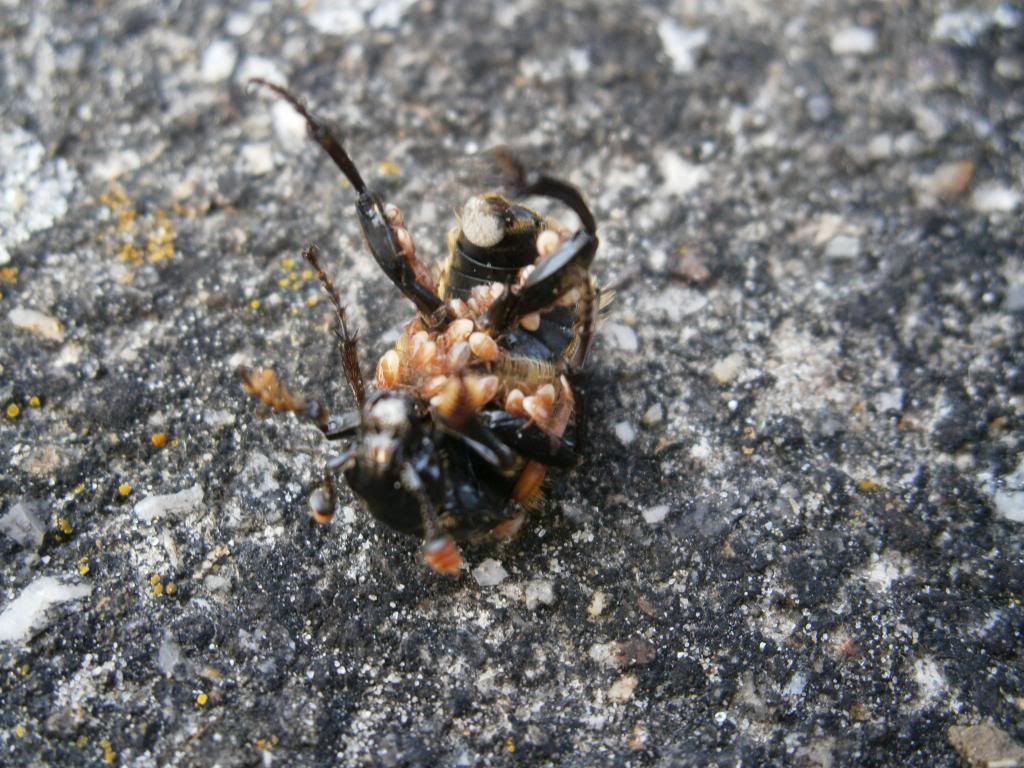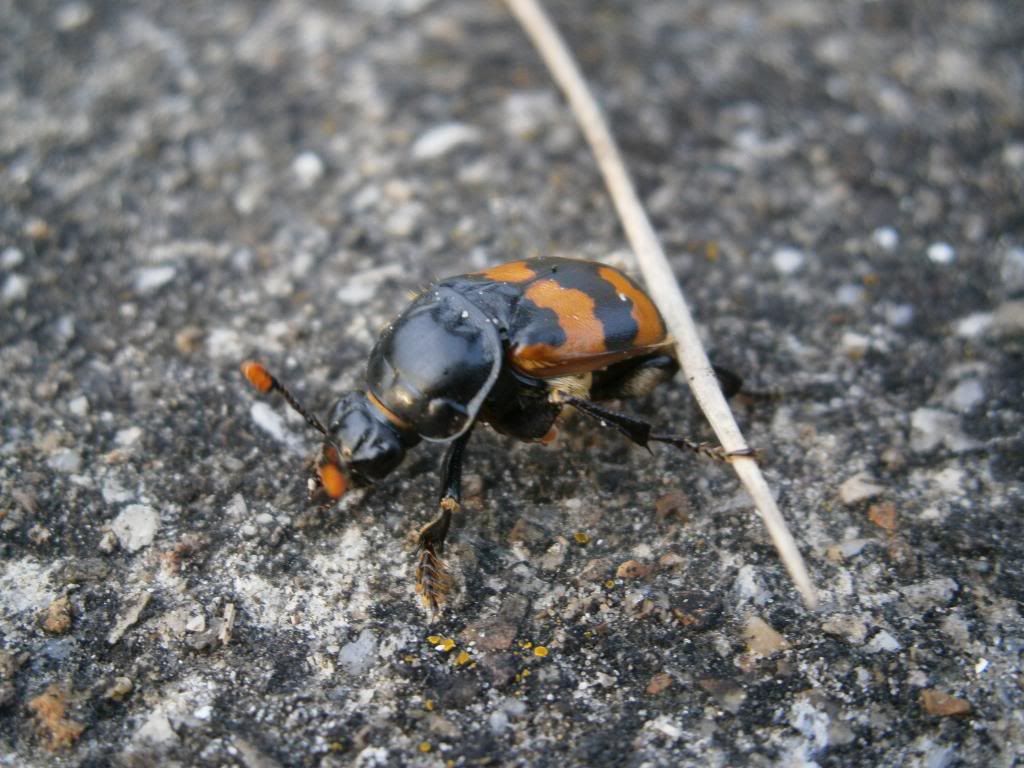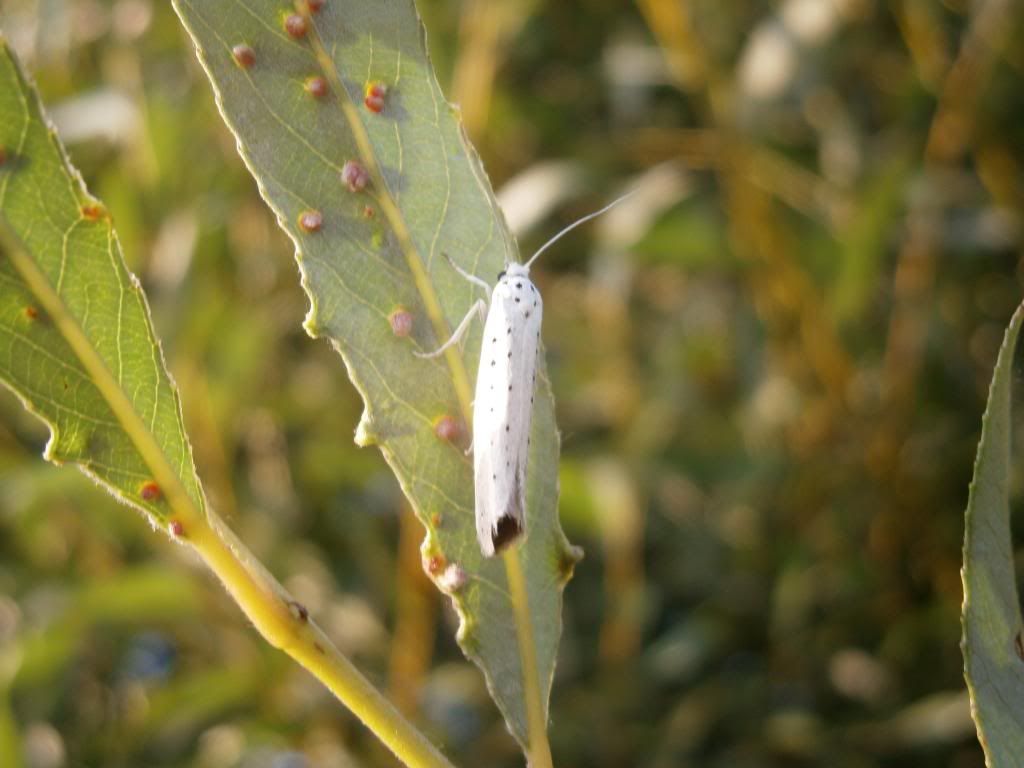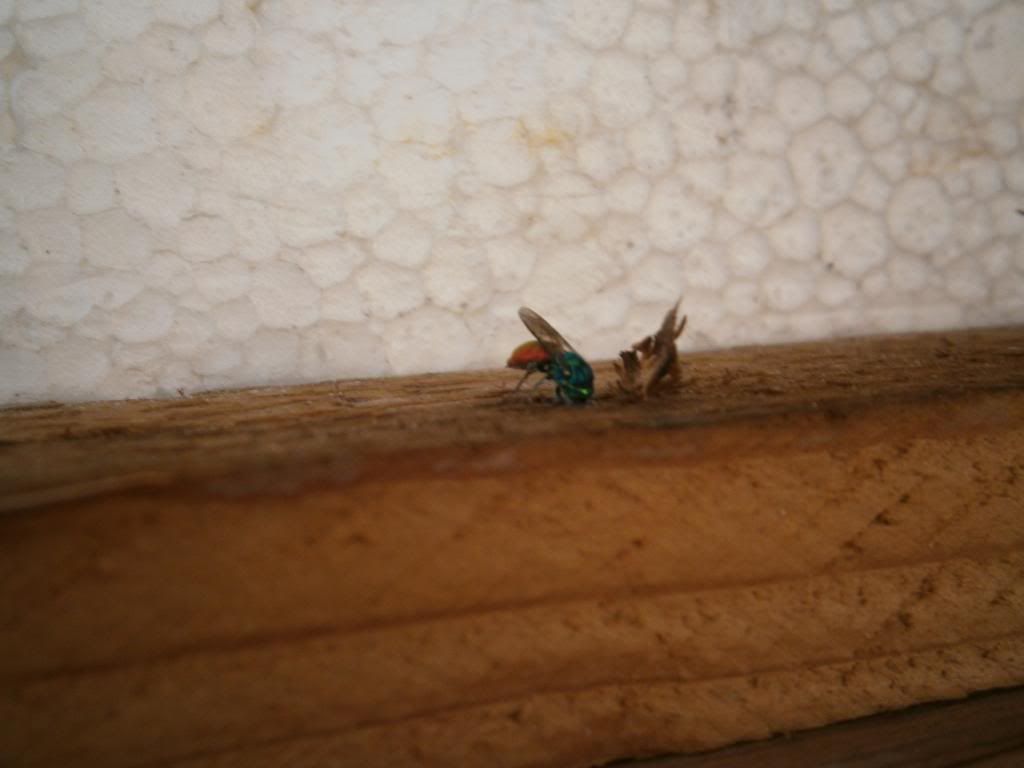Great stuff. Not many records for it in Wales.
Very very few. if it could be confirmed (which it can't) it would probably be a new county record.
Great stuff. Not many records for it in Wales.
Would you have to have anj actual specimen to confirm it? I'm curious about the process my collecting thus far has been moth trapping in my garden then releasing them, if I were to find a rare species then would it be enough to take photos?
Cheers
Matt
Just so I'm straight - in order to correctly record I have a rare never seen before spider I'd have to kill it? (Thus making it even rarer?)
Frog-wasp ?

Wow. That has me stumped.
I think the wasp in the picture has its abdomen tucked under its body (possibly trying to egg lay or to sting), but the combination of the dorsal yellow spot and the striped legs has me confused. I thought it might be one of the digger wasps, Mellinus arvensis, but the legs are wrong. Don't know.
Do you have any other pictures of it?


With those rear legs could it be an Ichneumon wasp, like - Amblyteles armatorius? As Harvestmaan says with the beam end missing or tucked under?




Niels, nice pics. Agree on the moth, and the weird thing is a ruby tail - a sort of Hymenopteran, not quite a bee, not quite a wasp. Very hard to determine to species.
The beetle is a Nicrophorus for sure, but determination to species, is very difficult as there are lots of very similar species. They are often infested with parasitic mites (no idea what sort) and can carry amazing numbers of them with no apparent ill effects.
One other tip. The convention for using what is usually referred to as 'Latin names' is that the Genus is with a capital letter, but the species is not, and the whole thing is usually put into italics. So, Spilosoma lubricipeda
But that's just me being picky.
I appreciate this is a hard request without a photo (I will try to get one next time I see it) but I will ask as a long shot anyhow.
In my garden this year I keep getting a very very small red butterfly feeding on my swiss mint plants. I would guess from head to end of the body it is less than 1cm long.
i was wondering if anyone would know what this might be? I have never seen it before but that may be due its small size so it has gone unnoticed or to only planting swiss mint this year and the fact its flowering and seeding really well.
Any thoughts would be appreciated!
It could've been a moth too...
